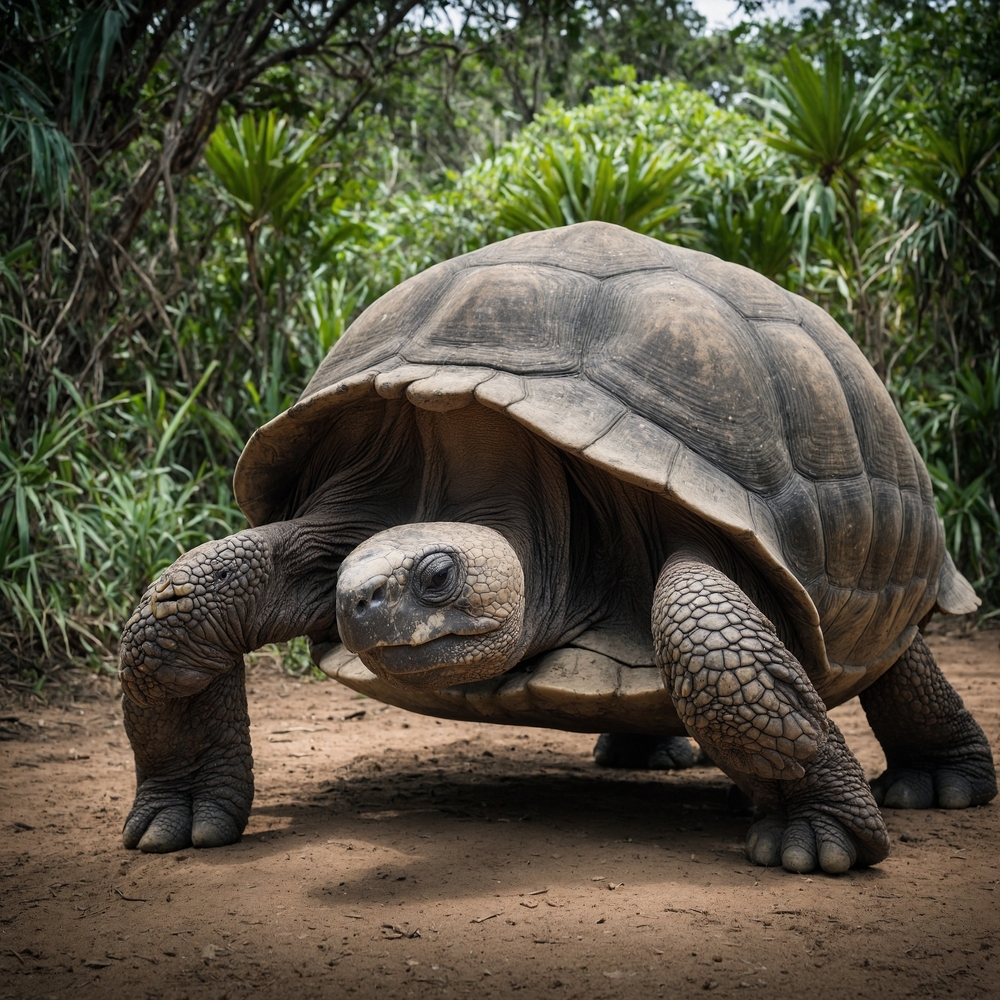
The Marginated Tortoise (Testudo marginata) is a remarkable species, known as Europe’s largest tortoise. Native to the rocky hillsides and scrublands of Greece and the southern Balkans, these majestic reptiles have been captivating enthusiasts and researchers alike with their unique features and impressive size.
To understand these fascinating creatures better for a comprehensive guide to Marginated Tortoises, it’s essential to explore their natural habitat, diet, behavior, and care requirements.
Natural Habitat and Physical Characteristics
Marginated Tortoises thrive in Mediterranean climates, characterized by hot, dry summers and mild, wet winters. They prefer rocky terrains where they can find ample hiding spots and basking areas. These tortoises are easily recognizable by their distinctive shell, which has flared, serrated edges that give them their name. An adult Marginated Tortoise can grow up to 14 inches in length, with some individuals reaching up to 16 inches, making them the largest tortoises in Europe.
Their carapace is domed and elongated, often black with yellowish markings. The flared rear edges of the shell provide extra protection and help in camouflage among rocks and vegetation. Their sturdy legs and strong claws are adapted for digging and traversing rough terrain.
Diet and Nutrition
In the wild, Marginated Tortoises primarily feed on a variety of herbaceous plants, flowers, and occasionally fruits. To replicate their natural diet in captivity, it is crucial to provide a high-fiber, low-protein diet. Leafy greens such as dandelion, clover, and kale are excellent choices. You can also offer other vegetables like endive, escarole, and hibiscus leaves. Occasionally, they can enjoy treats like strawberries and melons, but these should not be a staple part of their diet.
Avoid feeding them high-protein foods like beans and peas, as these can cause kidney damage and other health issues. Also, avoid iceberg lettuce as it provides little nutritional value. Fresh water should always be available to keep them hydrated. Providing a shallow dish of water is ideal, as it allows them to drink and soak as needed.
Behavior and Social Structure
Marginated Tortoises are generally solitary creatures but can tolerate the presence of other tortoises, especially during the breeding season. Males can be territorial and may engage in combat to establish dominance, often ramming and biting each other. It’s important to monitor their interactions to prevent injuries.
In the wild, these tortoises are active during the day, particularly in the early morning and late afternoon when temperatures are more moderate. They spend a significant amount of time foraging for food and basking in the sun to regulate their body temperature. During the hottest part of the day, they retreat to shady spots or burrows to avoid overheating.
Housing and Enclosure
Providing an appropriate enclosure for your Marginated Tortoise is vital for their well-being. Outdoor enclosures are ideal, offering natural sunlight and space to roam. Ensure the enclosure is secure with walls high enough to prevent escape and a shaded area to protect them from extreme heat. The enclosure should also include hiding spots, such as logs, rocks, and vegetation, to mimic their natural habitat.
Indoor enclosures should be spacious and equipped with UVB lighting to mimic natural sunlight, aiding in calcium absorption and overall health. A temperature gradient is essential, with a basking spot of around 95°F (35°C) and a cooler area of about 75°F (24°C). Substrates like topsoil mixed with sand can provide a suitable environment for digging and burrowing.
Health and Veterinary Care
Regular health check-ups with a veterinarian specializing in reptiles are essential to detect any potential health issues early. Common health problems in Marginated Tortoises include respiratory infections, shell rot, and parasitic infestations. A balanced diet, proper housing, and regular veterinary care can prevent many of these issues.
Signs of a healthy tortoise include clear eyes, a smooth shell, and active behavior. If you notice symptoms like nasal discharge, lethargy, or changes in appetite, seek veterinary care promptly. Regular fecal exams can help detect and treat parasitic infections before they become severe.
Breeding and Lifespan
Marginated Tortoises have a relatively long lifespan, often living between 50 to 100 years when properly cared for. Breeding usually occurs in the spring, with males engaging in courtship behaviors such as circling and nipping at the female’s shell. Females lay clutches of 4-12 eggs, typically in sandy or loose soil.
The eggs incubate for about 60-120 days, depending on temperature conditions. Hatchlings are vulnerable and require special care to ensure their survival and healthy development. They should be housed separately from adults to prevent accidental injuries and provided with appropriate temperatures, humidity, and diet.
Conservation Status
While the Marginated Tortoise is not currently listed as endangered, their populations are threatened by habitat loss, illegal pet trade, and human activities. Conservation efforts focus on habitat preservation, legal protection, and captive breeding programs to ensure their survival in the wild.
Conclusion
The Marginated Tortoise is a fascinating and resilient species that makes a wonderful addition to any reptile enthusiast’s collection. Understanding their specific needs and behaviors is crucial for providing a suitable environment where they can thrive. By offering a balanced diet, appropriate housing, and regular veterinary care, you can ensure that your Marginated Tortoise leads a long and healthy life.

“Certified food guru. Internet maven. Bacon junkie. Tv enthusiast. Avid writer. Gamer. Beeraholic.”





More Stories
Two influencers drown after refusing to wear life jackets: “ruining selfies”
Uruguay 2024 election results: who won and when is the second round | Waiting to know whether there will be a runoff or not
Uruguay: Lacalle Pou leaves with his figure on the slopes | The Marcet and Asteziano scandals hit the right-wing ruler